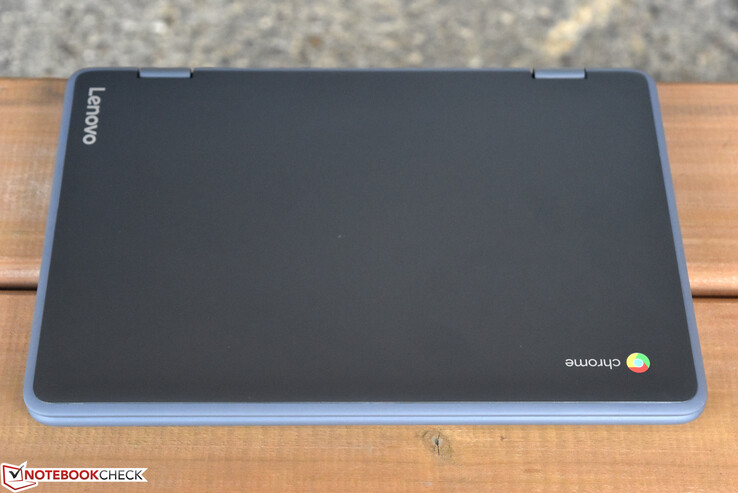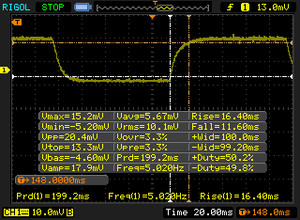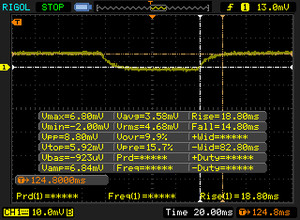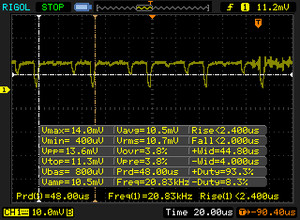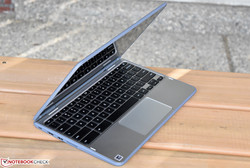Breve Análise do Portátil Lenovo Flex 11 Chromebook
Os Top 10
» Os Top 10 Portáteis Multimídia
» Os Top 10 Portáteis de Jogos
» Os Top 10 Portáteis Leves para Jogos
» Os Top 10 Portáteis Acessíveis de Escritório/Empresariais
» Os Top 10 Portáteis Premium de Escritório/Empresariais
» Os Top 10 dos Portáteis Workstation
» Os Top 10 Subportáteis
» Os Top 10 Ultrabooks
» Os Top 10 Conversíveis
» Os Top 10 Tablets
» Os Top 10 Smartphones
» A melhores Telas de Portáteis Analisadas Pela Notebookcheck
» Top 10 dos portáteis abaixo dos 500 Euros da Notebookcheck
» Top 10 dos Portáteis abaixo dos 300 Euros
| SD Card Reader - average JPG Copy Test (av. of 3 runs) | |
| Lenovo ThinkPad 13 Chromebook | |
| Lenovo IdeaPad MIIX 310-10ICR | |
| Lenovo Flex 11 Chromebook | |
| |||||||||||||||||||||||||
iluminação: 85 %
iluminação com acumulador: 275.1 cd/m²
Contraste: 887:1 (Preto: 0.31 cd/m²)
ΔE ColorChecker Calman: 5.2 | ∀{0.5-29.43 Ø4.78}
ΔE Greyscale Calman: 2.8 | ∀{0.09-98 Ø5}
Gamma: 2.28
CCT: 6861 K
| Lenovo Flex 11 Chromebook IPS, 11.6", 1366x768 | Asus Transformer Book T100HA-C4-GR AUO20D4, IPS, 10.1", 1280x800 | Lenovo ThinkPad 13 Chromebook IPS, 13.3", 1920x1080 | Acer Chromebook R13 CB5-312T-K0YK IPS, 13.3", 1920x1080 | Lenovo IdeaPad MIIX 310-10ICR IPS, 10.1", 1280x800 | |
|---|---|---|---|---|---|
| Display | |||||
| Display P3 Coverage (%) | 52.8 | 51.1 | |||
| sRGB Coverage (%) | 73 | 75.2 | |||
| AdobeRGB 1998 Coverage (%) | 53.3 | 52.7 | |||
| Response Times | -21% | 3% | 9% | ||
| Response Time Grey 50% / Grey 80% * (ms) | 33.6 ? | 37.6 ? -12% | 38 ? -13% | 31.6 ? 6% | |
| Response Time Black / White * (ms) | 28 ? | 36 ? -29% | 23 ? 18% | 24.8 ? 11% | |
| PWM Frequency (Hz) | 20830 ? | 69.4 | |||
| Screen | 36% | -15% | -12% | -22% | |
| Brightness middle (cd/m²) | 275.1 | 480.2 75% | 262.9 -4% | 192 -30% | 251.9 -8% |
| Brightness (cd/m²) | 255 | 455 78% | 261 2% | 204 -20% | 233 -9% |
| Brightness Distribution (%) | 85 | 85 0% | 92 8% | 88 4% | 83 -2% |
| Black Level * (cd/m²) | 0.31 | 0.324 -5% | 0.601 -94% | 0.23 26% | 0.348 -12% |
| Contrast (:1) | 887 | 1482 67% | 437 -51% | 835 -6% | 724 -18% |
| Colorchecker dE 2000 * | 5.2 | 3.45 34% | 4.87 6% | 6.35 -22% | |
| Colorchecker dE 2000 max. * | 20.3 | 12.18 40% | 11.15 45% | ||
| Greyscale dE 2000 * | 2.8 | 2.67 5% | 3.51 -25% | 3.99 -43% | 7.09 -153% |
| Gamma | 2.28 96% | 2.34 94% | 2.17 101% | 2.45 90% | 2.02 109% |
| CCT | 6861 95% | 6164 105% | 6476 100% | 6380 102% | 8590 76% |
| Color Space (Percent of AdobeRGB 1998) (%) | 47.28 | 52.69 | |||
| Color Space (Percent of sRGB) (%) | 84.38 | ||||
| Média Total (Programa/Configurações) | 36% /
36% | -18% /
-16% | -5% /
-8% | -7% /
-16% |
* ... menor é melhor
Exibir tempos de resposta
| ↔ Tempo de resposta preto para branco | ||
|---|---|---|
| 28 ms ... ascensão ↗ e queda ↘ combinadas | ↗ 16.4 ms ascensão | |
| ↘ 11.6 ms queda | ||
| A tela mostra taxas de resposta relativamente lentas em nossos testes e pode ser muito lenta para os jogadores. Em comparação, todos os dispositivos testados variam de 0.1 (mínimo) a 240 (máximo) ms. » 70 % de todos os dispositivos são melhores. Isso significa que o tempo de resposta medido é pior que a média de todos os dispositivos testados (20.2 ms). | ||
| ↔ Tempo de resposta 50% cinza a 80% cinza | ||
| 33.6 ms ... ascensão ↗ e queda ↘ combinadas | ↗ 18.8 ms ascensão | |
| ↘ 14.8 ms queda | ||
| A tela mostra taxas de resposta lentas em nossos testes e será insatisfatória para os jogadores. Em comparação, todos os dispositivos testados variam de 0.165 (mínimo) a 636 (máximo) ms. » 45 % de todos os dispositivos são melhores. Isso significa que o tempo de resposta medido é semelhante à média de todos os dispositivos testados (31.6 ms). | ||
Cintilação da tela / PWM (modulação por largura de pulso)
| Tela tremeluzindo/PWM detectado | 20830 Hz | ≤ 99 % configuração de brilho | |
A luz de fundo da tela pisca em 20830 Hz (pior caso, por exemplo, utilizando PWM) Cintilação detectada em uma configuração de brilho de 99 % e abaixo. Não deve haver cintilação ou PWM acima desta configuração de brilho. A frequência de 20830 Hz é bastante alta, então a maioria dos usuários sensíveis ao PWM não deve notar nenhuma oscilação. [pwm_comparison] Em comparação: 53 % de todos os dispositivos testados não usam PWM para escurecer a tela. Se PWM foi detectado, uma média de 8111 (mínimo: 5 - máximo: 343500) Hz foi medida. | |||
| Sunspider - 1.0 Total Score (classificar por valor) | |
| Lenovo Flex 11 Chromebook | |
| Asus Transformer Book T100HA-C4-GR | |
| Lenovo ThinkPad 13 Chromebook | |
| Acer Chromebook R13 CB5-312T-K0YK | |
| JetStream 1.1 - Total Score (classificar por valor) | |
| Lenovo Flex 11 Chromebook | |
| Lenovo ThinkPad 13 Chromebook | |
| Acer Chromebook R13 CB5-312T-K0YK | |
| Octane V2 - Total Score (classificar por valor) | |
| Lenovo Flex 11 Chromebook | |
| Lenovo ThinkPad 13 Chromebook | |
| Acer Chromebook R13 CB5-312T-K0YK | |
| Lenovo IdeaPad MIIX 310-10ICR | |
| WebXPRT 2015 - Overall (classificar por valor) | |
| Lenovo Flex 11 Chromebook | |
| Lenovo ThinkPad 13 Chromebook | |
| Acer Chromebook R13 CB5-312T-K0YK | |
* ... menor é melhor
(+) A temperatura máxima no lado superior é 33 °C / 91 F, em comparação com a média de 35.9 °C / 97 F , variando de 21.4 a 59 °C para a classe Subnotebook.
(+) A parte inferior aquece até um máximo de 36 °C / 97 F, em comparação com a média de 39.3 °C / 103 F
(+) Em uso inativo, a temperatura média para o lado superior é 23.2 °C / 74 F, em comparação com a média do dispositivo de 30.8 °C / ### class_avg_f### F.
(+) Os apoios para as mãos e o touchpad são mais frios que a temperatura da pele, com um máximo de 28.4 °C / 83.1 F e, portanto, são frios ao toque.
(±) A temperatura média da área do apoio para as mãos de dispositivos semelhantes foi 28.2 °C / 82.8 F (-0.2 °C / -0.3 F).
Lenovo Flex 11 Chromebook análise de áudio
(+) | os alto-falantes podem tocar relativamente alto (###valor### dB)
Graves 100 - 315Hz
(-) | quase nenhum baixo - em média 29.1% menor que a mediana
(±) | a linearidade dos graves é média (11.6% delta para a frequência anterior)
Médios 400 - 2.000 Hz
(+) | médios equilibrados - apenas 3.9% longe da mediana
(±) | a linearidade dos médios é média (8.7% delta para frequência anterior)
Altos 2 - 16 kHz
(+) | agudos equilibrados - apenas 4.1% longe da mediana
(±) | a linearidade dos máximos é média (10.2% delta para frequência anterior)
Geral 100 - 16.000 Hz
(±) | a linearidade do som geral é média (24.5% diferença em relação à mediana)
Comparado com a mesma classe
» 82% de todos os dispositivos testados nesta classe foram melhores, 4% semelhantes, 14% piores
» O melhor teve um delta de 5%, a média foi 18%, o pior foi 53%
Comparado com todos os dispositivos testados
» 73% de todos os dispositivos testados foram melhores, 6% semelhantes, 21% piores
» O melhor teve um delta de 4%, a média foi 24%, o pior foi 134%
Acer Chromebook R13 CB5-312T-K0YK análise de áudio
(±) | o volume do alto-falante é médio, mas bom (###valor### dB)
Graves 100 - 315Hz
(±) | graves reduzidos - em média 13.2% menor que a mediana
(+) | o baixo é linear (5.6% delta para a frequência anterior)
Médios 400 - 2.000 Hz
(+) | médios equilibrados - apenas 3.2% longe da mediana
(+) | médios são lineares (6.9% delta para frequência anterior)
Altos 2 - 16 kHz
(+) | agudos equilibrados - apenas 2.5% longe da mediana
(+) | os máximos são lineares (5.5% delta da frequência anterior)
Geral 100 - 16.000 Hz
(+) | o som geral é linear (13.9% diferença em relação à mediana)
Comparado com a mesma classe
» 0% de todos os dispositivos testados nesta classe foram melhores, 14% semelhantes, 86% piores
» O melhor teve um delta de 14%, a média foi 25%, o pior foi 35%
Comparado com todos os dispositivos testados
» 15% de todos os dispositivos testados foram melhores, 4% semelhantes, 81% piores
» O melhor teve um delta de 4%, a média foi 24%, o pior foi 134%
| desligado | |
| Ocioso | |
| Carga |
|
Key:
min: | |
| Lenovo Flex 11 Chromebook MT8173C, PowerVR GX6250, 32 GB eMMC Flash, IPS, 1366x768, 11.6" | Lenovo ThinkPad 13 Chromebook 6300U, HD Graphics 520, 32 GB eMMC Flash, IPS, 1920x1080, 13.3" | Acer Chromebook R13 CB5-312T-K0YK MT8173C, PowerVR GX6250, 32 GB eMMC Flash, IPS, 1920x1080, 13.3" | Lenovo IdeaPad MIIX 310-10ICR Z8350, HD Graphics (Cherry Trail), 64 GB eMMC Flash, IPS, 1280x800, 10.1" | |
|---|---|---|---|---|
| Power Consumption | -11% | -65% | -102% | |
| Idle Minimum * (Watt) | 1.5 | 0.77 49% | 3.8 -153% | 5.14 -243% |
| Idle Average * (Watt) | 5.4 | 5.11 5% | 6.2 -15% | 7.6 -41% |
| Idle Maximum * (Watt) | 5.5 | 5.88 -7% | 6.6 -20% | 8.28 -51% |
| Load Average * (Watt) | 6.3 | 7.43 -18% | 11 -75% | 11.33 -80% |
| Load Maximum * (Watt) | 7.9 | 14.73 -86% | 12.7 -61% | 15.36 -94% |
* ... menor é melhor
| Lenovo Flex 11 Chromebook MT8173C, PowerVR GX6250, 45 Wh | Asus Transformer Book T100HA-C4-GR Z8500, HD Graphics (Cherry Trail), 30 Wh | Lenovo ThinkPad 13 Chromebook 6300U, HD Graphics 520, 42 Wh | Acer Chromebook R13 CB5-312T-K0YK MT8173C, PowerVR GX6250, 53.9 Wh | Lenovo IdeaPad MIIX 310-10ICR Z8350, HD Graphics (Cherry Trail), 33 Wh | |
|---|---|---|---|---|---|
| Duração da bateria | -29% | -30% | 2% | -16% | |
| WiFi v1.3 (h) | 12.7 | 9 -29% | 8.9 -30% | 12.9 2% | 10.7 -16% |
| Reader / Idle (h) | 24.3 | 20.8 | |||
| Load (h) | 4.1 | 2.8 |
Pro
Contra
A Lenovo tirou as luvas na luta pelo mercado educacional com a introdução do Chromebook Flex 11. Sob seu preço ultra acessível de $279, estão quase todas as principais características esperadas de um concorrente para essa coroa sedutora. É construído a partir de um plástico ABS/policarbonato barato (e absolutamente não elegante) que promete de durabilidade e está envolvido com um para-choques de borracha que o ajuda a resistir ao dano causado por pequenas gotas. Tem um teclado antideslizante e touchpad com um design especial para canalizar água longe dos equipamentos internos do dispositivo. É relativamente rápido graças aos requisitos leves do Chrome OS, mas gerencia simultaneamente longas durações da bateria graças à eficiência do grandePEQUENO SoC e sua grande bateria. Além disso, a tela é realmente bastante decente (apesar de sua resolução lamentável) e também é táctil.
O Chromebook Flex 11 não lança nenhum soco na sua tentativa de assumir o mercado educacional, cobrindo quase todas as bases: desempenho ágil e confiável, construção durável, longas durações de bateria e um preço acessível. No entanto, seus dispositivos de entrada e conectividade deixam muito a desejar, e sua aparência não é o seu forte.
É claro que com menos de $300, inevitavelmente ainda há compromissos sérios em jogo. Para começar- e sabemos que você está ficando cansado de ouvir isso, mas deve ser apontado - o Chrome OS está longe de ser o sistema operacional altamente compatível e altamente capaz que o Windows é. O suporte para aplicativos Android está quase aqui, mas mesmo considerando isso, este não é um PC completo. Além disso, os dispositivos de entrada são medíocres na melhor das hipóteses, com o teclado com deslocamentos curtos e resposta inarticulada, e os botões integrados do touchpad, perto do final da lista dos que avaliamos recentemente. É também uma máquina bastante pesada e volumosa para o seu tamanho de tela de 11,6 polegadas, mas supomos que a maioria das crianças poderia viver com essa limitação. Finalmente, a conectividade é incrivelmente básica, com apenas duas portas USB (uma das quais - a porta Type-C - também funciona como a porta de carregamento) e uma porta HDMI para conexões de acessórios e vídeo.
Em geral, no contexto do seu preço, o Flex 11 é uma recomendação fácil para quem pode lidar com a pequena lista de inconvenientes. Não há nada extravagante nem impressionante sobre isso, mas é difícil de zombar do pacote total, dado o valor do dinheiro.
Lenovo Flex 11 Chromebook
- 06/26/2017 v6 (old)
Steve Schardein




